AWS News Blog
New .BOT gTLD from Amazon
Today, I’m excited to announce the launch of .BOT, a new generic top-level domain (gTLD) from Amazon. Customers can use .BOT domains to provide an identity and portal for their bots. Fitness bots, slack bots, e-commerce bots, and more can all benefit from an easy-to-access .BOT domain. The phrase “bot” was the 4th most registered domain keyword within the .COM TLD in 2016 with more than 6000 domains per month. A .BOT domain allows customers to provide a definitive internet identity for their bots as well as enhancing SEO performance.
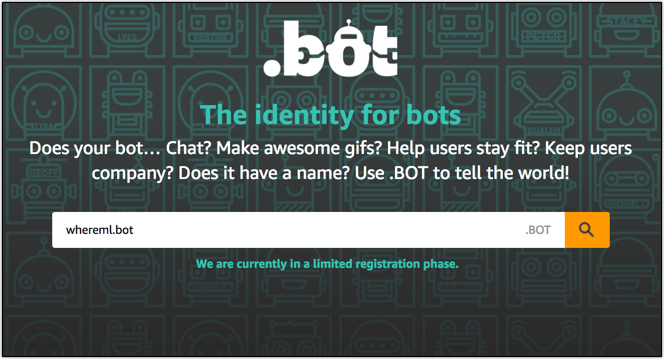
At the time of this writing .BOT domains start at $75 each and must be verified and published with a supported tool like: Amazon Lex, Botkit Studio, Dialogflow, Gupshup, Microsoft Bot Framework, or Pandorabots. You can expect support for more tools over time and if your favorite bot framework isn’t supported feel free to contact us here: contactbot@amazon.com.
Below, I’ll walk through the experience of registering and provisioning a domain for my bot, whereml.bot. Then we’ll look at setting up the domain as a hosted zone in Amazon Route 53. Let’s get started.
Registering a .BOT domain
First, I’ll head over to https://amazonregistry.com/bot, type in a new domain, and click magnifying class to make sure my domain is available and get taken to the registration wizard.
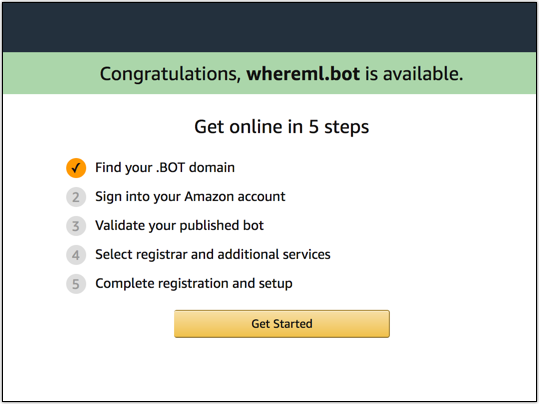
Next, I have the opportunity to choose how I want to verify my bot. I build all of my bots with Amazon Lex so I’ll select that in the drop down and get prompted for instructions specific to AWS. If I had my bot hosted somewhere else I would need to follow the unique verification instructions for that particular framework.
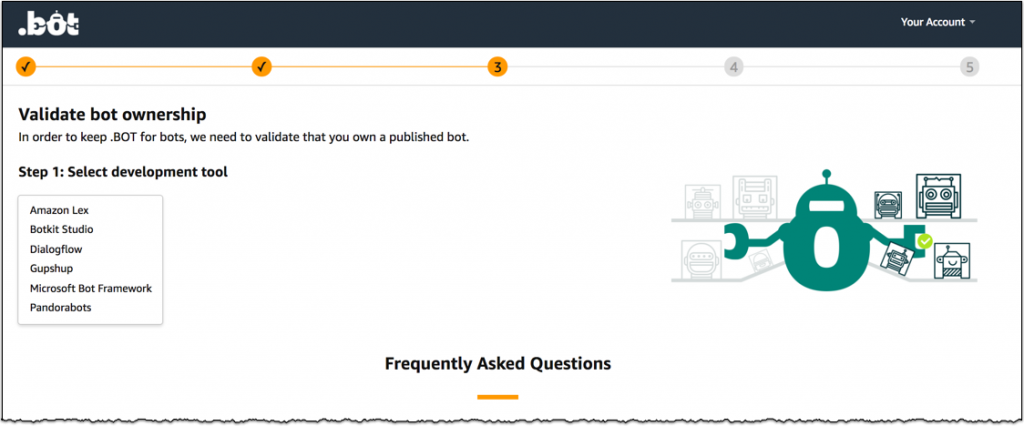

To verify my Lex bot I need to give the Amazon Registry permissions to invoke the bot and verify it’s existence. I’ll do this by creating an AWS Identity and Access Management (IAM) cross account role and providing the AmazonLexReadOnly permissions to that role. This is easily accomplished in the AWS Console. Be sure to provide the account number and external ID shown on the registration page.

Now I’ll add read only permissions to our Amazon Lex bots.

I’ll give my role a fancy name like DotBotCrossAccountVerifyRole and a description so it’s easy to remember why I made this then I’ll click create to create the role and be transported to the role summary page.

Finally, I’ll copy the ARN from the created role and save it for my next step.

Here I’ll add all the details of my Amazon Lex bot. If you haven’t made a bot yet you can follow the tutorial to build a basic bot. I can refer to any alias I’ve deployed but if I just want to grab the latest published bot I can pass in $LATEST as the alias. Finally I’ll click Validate and proceed to registering my domain.

Amazon Registry works with a partner EnCirca to register our domains so we’ll select them and optionally grab Site Builder. I know how to sling some HTML and Javascript together so I’ll pass on the Site Builder side of things.

After I click continue we’re taken to EnCirca’s website to finalize the registration and with any luck within a few minutes of purchasing and completing the registration we should receive an email with some good news:

Alright, now that we have a domain name let’s find out how to host things on it.
Using Amazon Route53 with a .BOT domain
Amazon Route 53 is a highly available and scalable DNS with robust APIs, healthchecks, service discovery, and many other features. I definitely want to use this to host my new domain. The first thing I’ll do is navigate to the Route53 console and create a hosted zone with the same name as my domain.
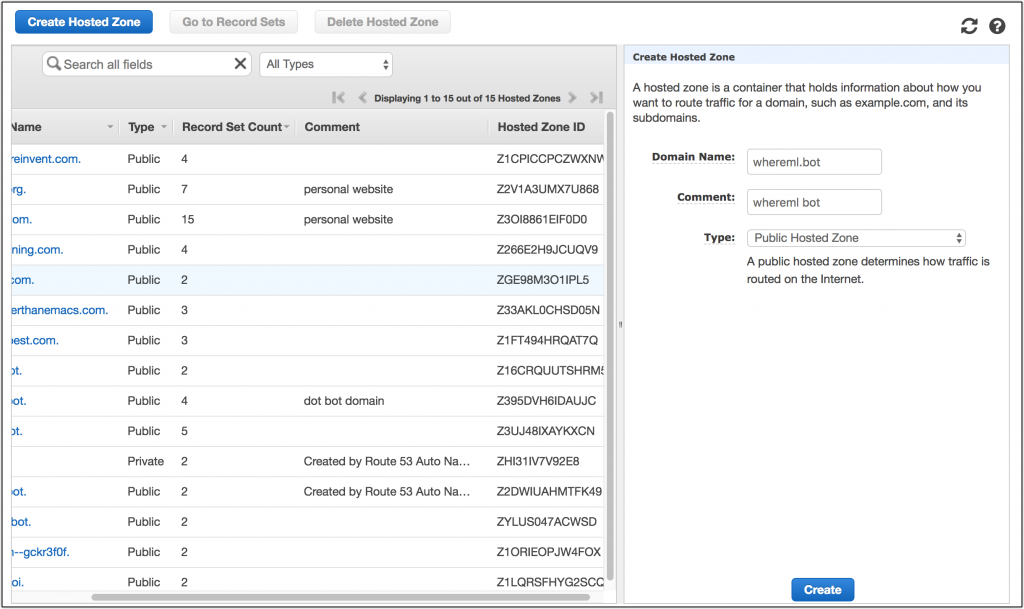
Great! Now, I need to take the Name Server (NS) records that Route53 created for me and use EnCirca’s portal to add these as the authoritative nameservers on the domain.
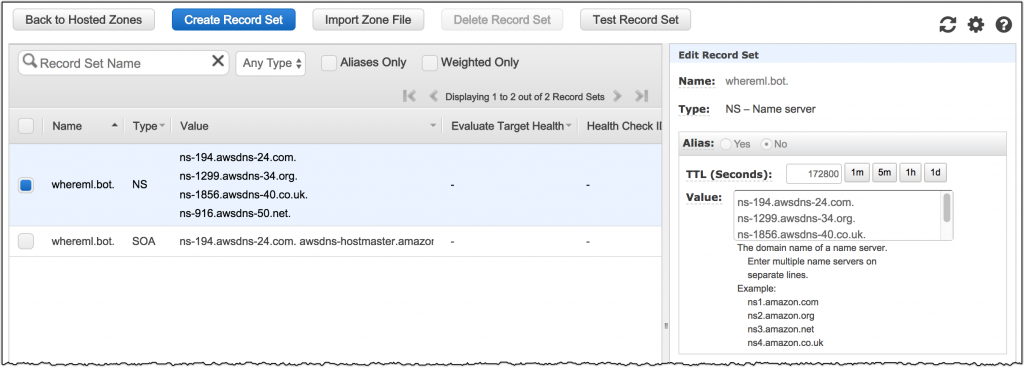
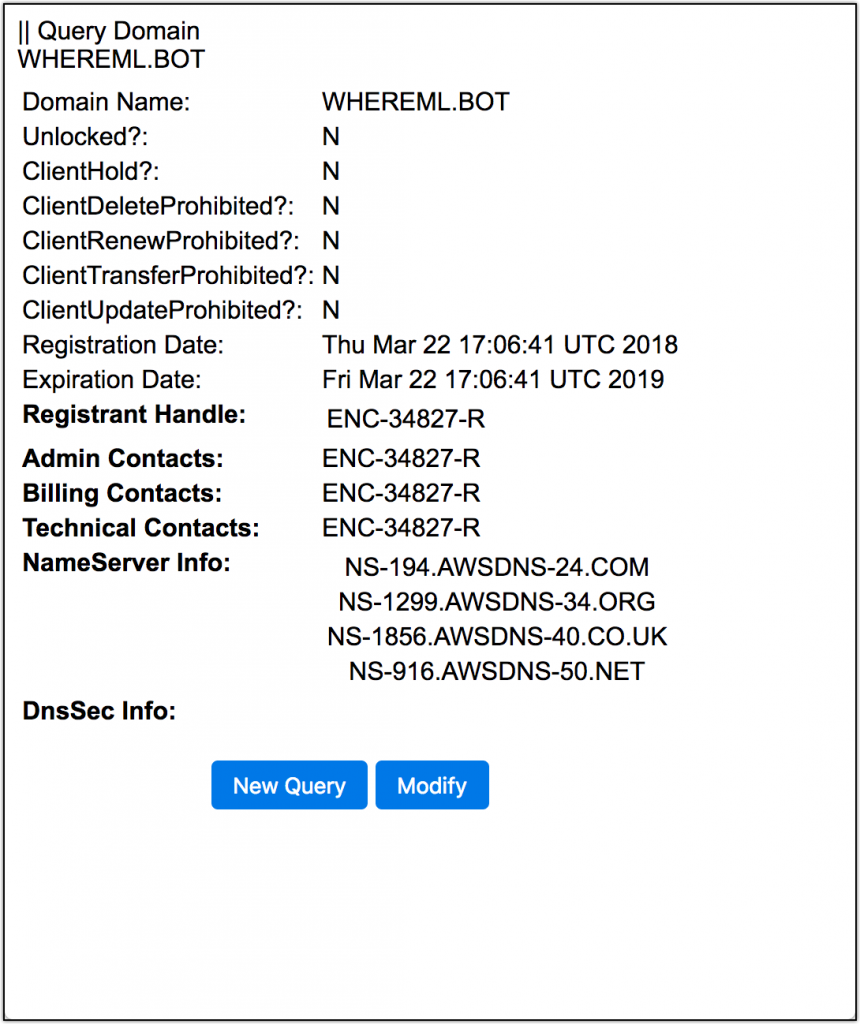
Now I just add my records to my hosted zone and I should be able to serve traffic! Way cool, I’ve got my very own .bot domain for @WhereML.
Next Steps
- I could and should add to the security of my site by creating TLS certificates for people who intend to access my domain over TLS. Luckily with AWS Certificate Manager (ACM) this is extremely straightforward and I’ve got my subdomains and root domain verified in just a few clicks.

- I could create a cloudfront distribution to front an S3 static single page application to host my entire chatbot and invoke Amazon Lex with a cognito identity right from the browser.
– Randall